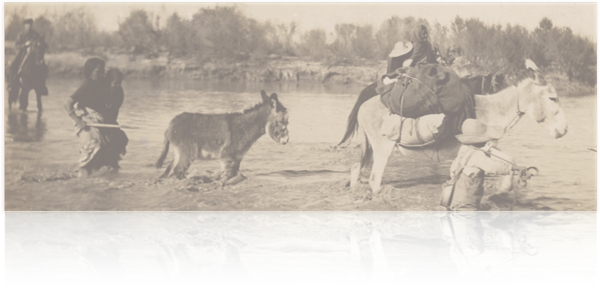
Emilio Hernandez dedicated over fifty years of his life to serving God and his fellow humans as a Methodist pastor who ministered to Mexican immigrant families in Arizona and California. When he died at home in Santa Paula, California in 1973, there were many who believed he was a holy man. They say on his death bed a golden light surrounded his body and filled the room. Others claimed that his prayers restored the sight of a blind man and exorcised a demon from someone possessed. Still others remembered Emilio had been able to drive his car alone to visit them at their homes, even though he himself had gone completely blind from diabetes. But for most people who knew him, he was simply a very good and humble man who worked tirelessly to help others. He was a loving family patriarch, a loyal friend, and a dedicated minister with a winning smile that reached your heart. To his grandchildren, including Walter, Emilio was a bigger-than-life presence; a kindly and charismatic man who delighted in children and who left a deep imprint in them. Walter nicknamed Emilio “Tata” and the name stuck, even after Walter grew up.
But there was another part of Emilio’s life, a mysterious and dark past he didn’t talk about; a past he wanted to leave behind and forget. He was born into dire poverty in a remote mining town in Mexico in 1888 and was forced to run away from home when he was five. He found refuge in a sprawling hacienda owned by the wealthy Guerrero family, and labored there for ten years under difficult conditions, without any contact with his own family. While the Guerrero family treated their workers much better than other owners did (who in many cases used humans as slaves), life for workers on the hacienda was often grueling. It was hard physical labor in a harsh climate from before sun up until after sun down, six days a week…
At the hacienda, Emilio was befriended by the owner’s son, Praxedis Guerrero, who would grow up to become a brilliant writer, newspaperman and political radical fighting the brutal dictatorship of the Mexican President, Porfirio Diaz. For Emilio, Praxedis was someone whom he could admire and look up to, the older brother he never had. And for Praxedis, who had a gift for awakening political and social consciousness in others, Emilo was an eager student. In 1904 they left Mexico together with three other friends and went north to the United States with the purpose of working in order to fund organized resistance against the Diaz regime. While in the U.S. they laid tracks for the expanding railroads in Colorado and labored in the Arizona gold mines. They also became associated with the PLM – the Mexican anarchist political party founded by Enrique and Ricardo Flores Magon – and dedicated themselves to creating an egalitarian society in Mexico, where the workers would receive their fair share of human and civil rights, and wealth. They published and distributed newspapers in both the United States and Mexico espousing their cause, and called for the end of Porfirio Diaz’s harsh regime. But their newspapers and political activities were brutally suppressed by both Mexican and US. authorities, and they endured persecution, imprisonment, and finally tragedy…
By 1911, the loss of Emilio’s friends, especially of Praxedis, plunged him into a spiral of despair, alcoholism and homelessness on the streets of Los Angeles, California. But Emilio eventually found his way again with the help of a new friend. A young, loyal and compassionate Norwegian missionary named Wilfred Wallenius, guided him toward a life of spirituality. Emiio realized there was a way to continue his quest to help his fellow humans improve their lives and their society – but now through non-violent, peaceful means. His dismal life was transformed into one of renewal, purpose, and fulfillment. With Wallenius’ help, Emilio finally got an education and a degree in Theology at USC and became an ordained Methodist minister.

